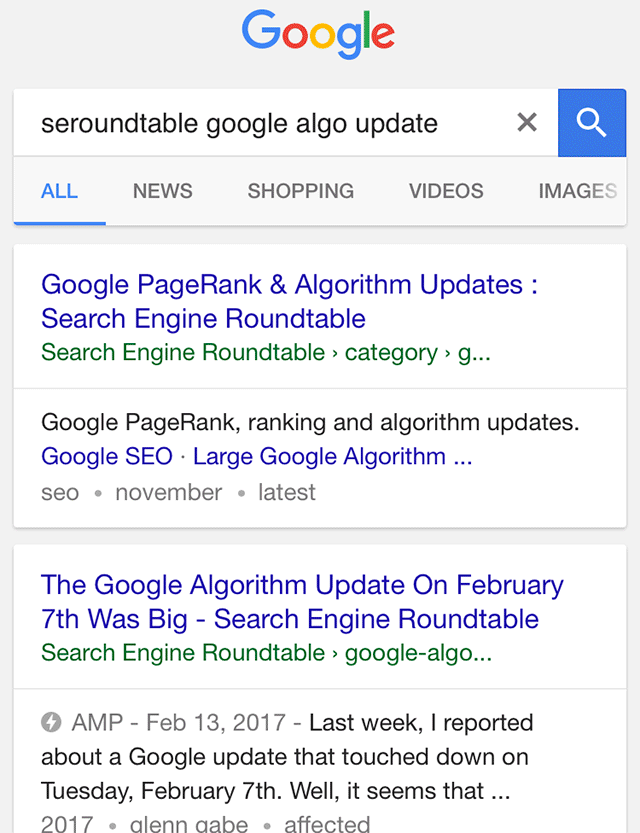In July 2021, Google announced that the July 2021 Core Algorithm update is now fully rolled out. Aside from that, there were several other algorithm and search industry updates. In this post, we’ll explore:
- The introduction of Google’s Link Spam Update;
- The implementation of an expanded ‘About This Result’ feature;
- The removal of Google’s AMP logo in search results;
- How WordPress 5.9 could help your Core Web Vitals score;
- The launch of free deals listings in search results;
- Google introducing new structured data for job listings;
Following our approach in previous posts, updates are set out in terms of their significance using our traffic light system – a red light is used for a key update that should be a priority, a green light is for news that is less immediately significant, and amber signifies that the update is of moderate importance.
Read on for the latest news and updates in the search industry.
Google Rolls Out Link Spam Update

Starting on the 26th July 2021, Google began rolling out a new search algorithm update: the link spam update. This will take two weeks to come into full effect and is designed to make Google’s ranking algorithms ‘even more effective at identifying and nullifying link spam more broadly, across multiple languages.’
The link spam update is part of a longstanding effort to prevent sites from manipulating links in order to game the search engine’s ranking process. Specifically, this update targets backlinks that have been acquired through affiliate programmes and link schemes.
In the past, black-hat SEOs have been able to improve a site’s ranking potential by buying backlinks from other sites or exchanging goods/services for links. All affiliate and paid-for posts should now be clearly identified as ‘sponsored’ and the rel=”sponsored” attribute should be applied.
The update enables Google to identify these types of links more effectively and ensure that they don’t pass on any value in terms of link equity. You can learn more about the changes to Google’s ranking algorithm and how to qualify links appropriately in the Search Central post on the link spam update.
What does this mean for me?
When looking to build backlinks to your site, avoid link schemes at all costs. Simply put, if you’re required to pay or provide goods/services to a site in exchange for a link, then the link isn’t worth having. That said, guest posting can still be a viable tactic provided that you’re not paying for the links you acquire.
Another upshot of the link spam update is that you need to be diligent in how you approach linking out to other sites. Going forward, if you add a link to an affiliate or sponsored post, then ensure that you apply the rel=”sponsored” attribute. For more information, see Google’s guidance on qualifying outbound links.
Expanded ‘About This Result’ Feature Provides Insight Into the Factors that Google Uses to Rank Search Results
Google has expanded the ‘About This Result’ panel that features in search results to provide useful context about why the search engine is returning a particular result in response to your query.

This can be accessed by clicking the three dots that appear next to most results, but you probably won’t see it in your search results just yet – the feature has only rolled out for 10% of eligible users in the US at present and will be applied to results in the UK and elsewhere over the coming months.
The updated information panel looks like this:
[Source]
As an SEO, the expanded About This Result panel offers some insight into the top-level ranking factors that influenced Google’s decision to rank a particular result. Looking at the example above, the feature highlights the following factors:
- The page features the search terms that were used in the query;
- The page refers to terms that are related to the query;
- The page’s content is written in the same language as the query;
- The searcher’s geographical location made the page particularly relevant.
The other example provided by Google goes one step further in referring to inbound links as a ranking factor:

[Source]
Here, the panel highlights the importance of contextually relevant backlinks from other sites by informing the searcher that ‘other websites with [their] search terms link to this result’. This hints at the value Google places on links from pages that use particular keywords, confirming the significance of anchor text and the contextual relevance of referring pages.
Read Google’s post on the expanded About This Result panel for more information.
What does this mean for me?
The expanded About This Result panel provides some interesting insights into the factors that are used to rank search results, but doesn’t point to anything that we didn’t already know – it’s likely that you were already aware that the ranking process involves matching keywords, related terms, contextually relevant backlinks, and local relevance.
It does, however, provide confirmation that you should be using a page’s target keywords and other related terms in the copy in order to rank, as well as acquiring links from contextually relevant pages on external sites where possible.
Google Removes AMP label from mobile SERPs

Google has removed the AMP label from mobile search results.
AMP stands for accelerated mobile pages and Google had previously shown a lightning bolt icon next to a search result to indicate that a page was an accelerated page.
What is an AMP page? An AMP page is a page that loads quickly because it’s designed for speed – something that’s important as part of core web vitals.
Browsers have an easier (and therefore faster) time interpreting AMP HTML, because it’s more streamlined and is specifically designed to help developers avoid common coding issues that lead to slow page loads.

So why has the AMP icon been removed? It’s reported that Google was thinking of showing a page experience label instead, but we have yet to see Google show the page experience label that they tested for a short period of time in December 2020.
What does this mean for me?
Google’s mobile search results displayed variations of AMP labels since 2016 – removing the AMP icon could influence searchers to click less on your pages. On the flip side, AMP was a requirement for featuring in Top Stories on mobile, given that there will no longer be a technical barrier to entry – this could result in many more sites ranking in the Top Stories.
SEOs and marketers should keep an eye on their AMP pages to see if those pages get fewer clicks from the mobile search results as a result of Google removing the AMP logo.
How WordPress 5.9 May Improve Largest Contentful Paint Through Refined Lazy Loading

Integrated in the core of WordPress 5.5, the lazy-loading attribute delays the browser loading elements of a web page, such as images, that are not visible on the screen.
The page can then load faster for the site visitor. However, after various tests by WordPress developers, it has been found that this feature could actually negatively impact the Largest Contentful Paint (LCP) metric from Core Web Vitals.
Core Web Vitals measure and evaluate the speed, responsiveness, and visual stability of websites and offer more opportunities for a rankings boost, so it’s important you are doing what you can to follow the web vitals guidance in order to optimise your website.

The developer who published the proposal to improve LCP noted that as of WordPress 5.5 the core code added the lazy loading attribute by default to all images and iframes.
But that’s not ideal because the images at the top of the page, like logos and featured images, need to download in order for the web page to become usable.
What the WordPress developer team is proposing is to exclude adding the lazy loading attribute to the first image or iframe in the code.
The developer tested this method on the top 50 most popular WordPress themes and discovered that adding it to the first image or iframe element provided an average improvement in the LCP Core Web Vitals score by an average of 7%.
What does this mean for me?
The timeline for the improved lazy loading behaviour is currently set for WordPress 5.9.
Which is planned for release in December 2021. If this goes ahead, your WordPress website could benefit from improved rankings as your website is more in line with the Core Web Vitals guidance as a result of the update positively impacting page speed.
Google Launches Free Deals Listings in Search Results

Google started rolling out free deals listings for e-commerce stores in search results on 21st July. The company says it is due to customer demand, as searches for the term “discount code” have increased by 50% since last year.

Key features:
- Google started displaying search-related deals in Shopping SERPs
- In October, Google will display bespoke Black Friday and Cyber Monday deal listing pages
- Merchants can add customise their promotions for all consumers, but only those who meet specified criteria can access these special prices
- Retailers can use this feature whether they don’t use Google advertising or not
What does this mean for me?
With COVID-19 restrictions lifting across many countries, people are returning to physical stores and that has impacted online sales. Google’s new free listing feature will help online retailers regain lost custom and improve their retail search experience at the same time.
While it appears the “Deals related to your search” section is exclusive to the US at the moment, EU customers can still find discounts and other deals on the Shopping tab with labelled listings. Just in time for the busiest e-commerce period of the year and something to add to your marketing strategy!
Google Launches New Structured Data For Job Listings
Google is introducing a new structured data markup property to highlight job listings that allow prospects to apply directly on the employer’s website through a simple online application process.

As well as the new structured data markup property, Google is also mandating a new editorial content policy for job listings in order for users to better understand the content and easily apply for it either directly or another way. The policy includes guidance around obstructive text and images, excessive and distractive ads, or content that doesn’t add any value to the job posting. This new editorial content policy for job listings is expected to come into effect on October 1, 2021.
Google recommends that employers adopt the following tips to improve trust and attract more applicants:
- No scams: Job listings must represent real job opportunities and not scams or spam.
- Improved user experience: Avoid asking for information when it is not necessary, poor quality pages, or having a complex application process.
- Remove expired job posts: Remove job listings that are no longer accepting new applicants.
- Use genuine dates: Don’t mask old jobs as new ones and don’t update the DatePosted markup if there was no change to the job post.
- No wrong or misleading information: Including incorrect salary, location, working hours, employment type, or other job-specific information.
The new markup property, directApply allows employers to indicate if there’s an option for prospective employees to apply for a job on their website.
Google states that this markup is only suitable for job listings that meet a certain set of user actions required to apply for the job. In other words, the user must be given the option of a short and straightforward application process.

Google classifies either of the following conditions as a “direct apply experience”:
- The user completes the application process on your site.
- Once arriving on your landing page via Google, the user does not have to click on apply and provide user information more than once to complete the application process.
For example, if a job listing requires applicants to upload a resume and then also type all the same information up again in an application form, it is not eligible for this markup.
Site owners are able to start using this markup right away and information on how to implement it on your job listings can be found at developers.google.com. As Google is still developing how it uses this information and integrating it into its index, there may not be any immediate effect in search results.
What does this mean for me?
If you advertise job listings directly on your website, the new directApply markup allows you to indicate to users seeing your landing page in Google search results that your job listing offers a simple online application process. This could have a significant effect on CTR (organic clicks) and conversion rate, allowing you to broaden your search for the perfect candidate.



